Understanding and Resolving Shower Backups Effectively
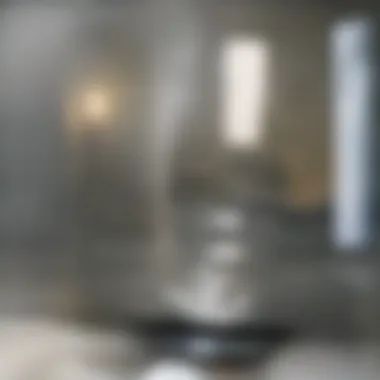
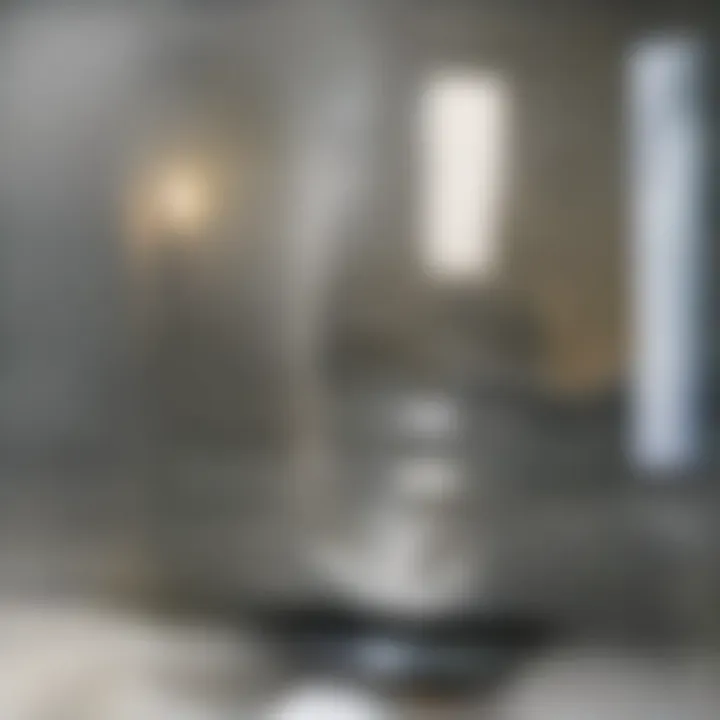
Intro
A backed-up shower is more than just an inconvenience; it signals underlying issues within your plumbing system. Ignoring these problems can lead to further complications, including damage to flooring and walls, mold growth, and unpleasant odors. Understanding the causes and effects of a backed-up shower is crucial for any homeowner. This guide will explore various aspects of shower drainage, from maintenance practices to troubleshooting techniques. We will examine how a malfunctioning shower can affect daily life and offer insights into preventative measures to avoid future backups.
Home Design Inspiration
Understanding Shower Drain Systems
An efficient shower drainage system integrates seamlessly with the overall home design. Knowing how these systems function can help in planning renovations or new constructions. A properly designed bathroom should consider not only aesthetics but also functionality.
Architectural Styles
Different architectural styles have distinct requirements for shower drainage. In contemporary homes, for instance, linear drains may be favored for their sleek appearance. Traditional designs, on the other hand, might opt for classic center drains, which align better with the overall aesthetic. Here are some key considerations:
- Contemporary Style: Focus on clean lines and minimalistic designs.
- Traditional Style: Opt for more ornate fixtures that match the overall theme.
- Traditional Materials: Ensure the materials used can withstand water exposure to prevent long-term issues.
Innovative Decor Trends
Innovative trends indicate a shift towards smart bathroom technology. Integrating smart drains that alert homeowners to potential backups before they become a problem shows promise. Additionally, eco-friendly materials for shower construction are gaining traction.
- Sustainable Design: Use recycled materials that are durable and water-resistant.
- Smart Technology: Consider innovations like pressure sensors that signal when drainage needs attention.
Importance of Regular Maintenance
Regular maintenance is vital to ensure your shower drains function correctly. Simple practices can significantly extend the lifespan of your plumbing.
- Routine Cleaning: Clear debris regularly to prevent clogs.
- Professional Inspections: Schedule inspections with a qualified plumber to identify potential vulnerabilities.
"Preventative measures are often more cost-effective than waiting for issues to arise."
Understanding the relationship between design and functionality is essential for maintaining a harmonious living space. Taking the time to address and resolve shower drainage issues allows for a more enjoyable and problem-free bathroom experience.
Prelude to Shower Drainage Issues
Understanding shower drainage issues is essential for maintaining an efficient and pleasant bathroom environment. The role of a shower drain is crucial. These systems allow water to exit quickly and efficiently, preventing standing water and other related problems. A backed-up shower can be more than just an inconvenience; it can lead to mold growth, unpleasant odors, and in some cases, expensive repairs if not addressed promptly.
In this section, we will explore specific elements of shower drainage issues. Homeowners must recognize the implications of poor drainage. For example, each time someone takes a shower, a certain amount of water, hair, and soap scum enter the drain. If left unchecked, these substances can accumulate. Additionally, improper bathing habits such as pouring oils or other products down the drain can exacerbate the problem. Understanding these factors can assist in implementing effective solutions.
Moreover, it is vital to note the benefits of regular maintenance for drainage systems. Frequent cleaning and proactive measures can significantly reduce the chances of blocking. Recognizing the signs early can lead to simple fixes that avoid more severe long-term disruptions. Thus, having an informed perspective on the importance of shower drainage helps homeowners maintain their bathrooms efficiently and effectively.
Understanding Bathing Habits
Bathing habits impact the condition of shower drains. The manner in which individuals bathe can introduce various elements into the plumbing system. For instance, frequent shavings or excessive product use can lead to hair and residue buildup. Regularly observing one's habits can identify habits that cause issues surrounding drains.
For example, using too much conditioner can lead to residue accumulation. When users wash their hair, the loose strands collect and create blockages along with soap residue. Understanding this correlation can motivate better practices for maintaining drainage in a household.
The Role of Shower Drains
Shower drains play a pivotal role in bathroom hygiene and functionality. Their primary task is to channel water away from shower areas promptly. The position and design of the drain impact how effectively it functions. For instance, a well-placed shower drain should ideally be lower than the surrounding floor to allow water to flow naturally towards it.
In many cases, the design of a shower drain needs special attention. Inadequate drainage solutions can result in unwanted standing water, creating an environment for bacteria and mold. Implementing proper drainage solutions can prevent serious plumbing issues. Regular inspection of the drainage system is necessary to identify wear and tear.
As a result, monitoring shower drains can save homeowners from potential problems down the line. Investing in quality drainage solutions is equally important. Products such as stylish but functional drain covers might enhance aesthetics while also preventing clogs from larger particles. This creates a balance between beauty and function in a bathroom space.
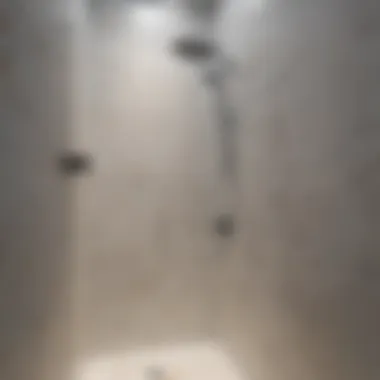
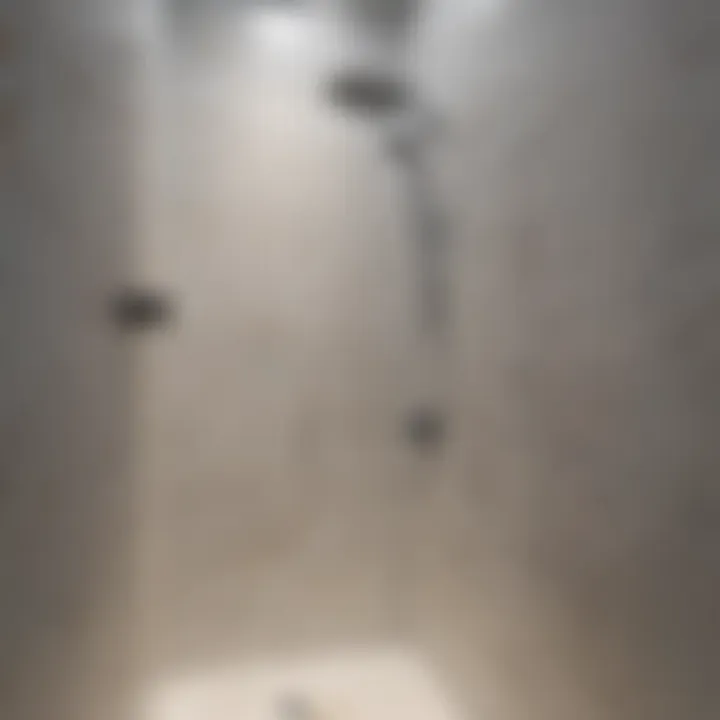
Common Causes of a Backed-Up Shower
Understanding the common causes of a backed-up shower is crucial for homeowners and design enthusiasts alike. Each of these causes not only highlights the vulnerabilities in typical shower drainage systems but also equips readers with insights on how to mitigate these issues. Gaining a clear comprehension of what leads to backups ultimately fosters better maintenance practices and enhances the shower's functionality.
Hair Accumulation
One of the most prevalent culprits of shower backups is hair accumulation. Over time, strands of hair can weave together and create a stubborn clog that significantly impairs drainage efficiency. Hair tends to gather around drain openings and joins forces with soap residue and other materials, forming a dense mass that is hard to dislodge. This issue is more pronounced in households with multiple residents or where long hair is common.
To prevent hair from entering the drain in the first place, using drain covers can be effective. These simple barriers catch hair while allowing water to pass through. Regularly cleaning these covers can drastically reduce the likelihood of a blockage.
Soap Scum Build-Up
Soap scum is another major factor contributing to a backed-up shower. This residue forms when soap, combined with minerals in water, accumulates on surfaces, especially around drain areas. Over time, soap scum can solidify, leading to significant obstructions in the pipes.
Using liquid soap or body wash instead of bar soap can lessen soap scum formation. Additionally, periodic cleaning of the shower and drain with an appropriate cleaner can help keep soap residues at bay, promoting smoother water flow.
Foreign Objects in the Drain
Foreign objects are often a surprising source of shower clogs. Tiny items, such as plastic pieces from products or even small toys, can easily find their way into the drain, obstructing the water flow. This can be particularly problematic in households with children who might inadvertently drop items into the shower while bathing.
It is advisable for homeowners to be mindful of what gets within the drainage vicinity. Installing protective barriers can also help catch foreign objects before they slip into the drain.
Pipe Blockages
Lastly, pipe blockages are a more systemic issue that can lead to a backed-up shower. These blockages can stem from a combination of hair, soap scum, mineral build-up, and foreign objects accumulating over time. If the drain pipes have not been professionally maintained, this can exacerbate the problem.
Regular inspections by plumbing professionals can identify and address these potential blockages before they escalate into major problems. Keeping drains clear and addressing small blockages promptly can help prevent more severe plumbing issues and save homeowners time and valuable resources.
Identifying the Problem
Identifying a backed-up shower is a crucial step for homeowners. Understanding the early indicators can save time and prevent further complications. Knowing how to spot potential problems allows individuals to respond swiftly. Intervening at the right moment may avoid costly repairs down the line.
Early Warning Signs
Early detection of a problem can significantly reduce damage and inconvenience. Look for these signals:
- Slow Drainage: If water takes longer to drain, it might suggest buildup.
- Gurgling Noises: Unusual sounds from the drain are often a precursor to blockage.
- Water Pooling: Puddles around the shower base indicate an issue that needs addressing.
By being vigilant, homeowners can take proactive measures and perhaps resort to simple solutions before the situation worsens.
Assessing Drainage Speed
Monitoring how quickly water drains is vital. A healthy shower should drain within a few seconds. If drainage slows, assess the situation. Sometimes hair and soap scum create a gradual block, requiring minimal intervention. To check this:
- Turn on the Shower: Note how quickly the water pools.
- Time It: A properly functioning drain should facilitate complete evacuation within a short period.
- Visual Inspection: Look for visible obstructions at the drain opening.
By keeping a keen eye on drainage speed, one can gauge when to take action.
Unexpected Odors
Unpleasant smells are clear indicators of potential plumbing issues. If the shower emanates a foul odor, it often means something is trapped in the pipes, breaking down. Common causes might include decomposing hair or organic matter caught in the drain.
- Identify the Source: Recognizing where the smell arises can guide you to the solution.
- Do a Quick Clean: Sometimes, a thorough cleaning of the shower area can alleviate the issue temporarily.
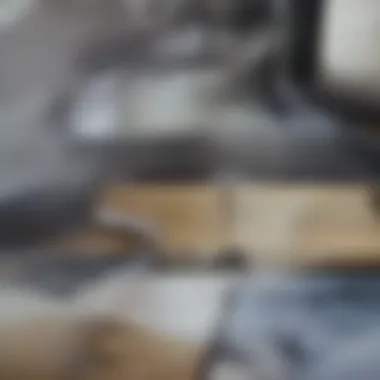

Addressing odors promptly is essential, as they may indicate deeper problems in the drainage system.
"Ignoring these signs can lead to larger issues that impact home comfort and potentially the home's value."
Practical Steps for Resolving a Backed-Up Shower
Resolving a backed-up shower effectively requires a strategic approach. Homeowners often face the challenge of drainage issues that can disrupt day-to-day routines. Practical steps are essential not only for restoring normal flow but also for preventing future occurrences. By acting promptly, individuals can save time and avoid costly repairs. The steps discussed in this section aim to provide actionable options ranging from do-it-yourself methods to professional interventions.
DIY Declogging Techniques
Plunging
Plunging is one of the first-line methods for clearing a backed-up shower. The key characteristic of plunging is its simplicity and accessibility. Anyone can use a plunger with little experience. It requires no special tools or complex procedures. This approach is beneficial as it often resolves minor clogs quickly. The unique feature of plunging is its ability to create a vacuum that dislodges debris without the need for chemicals.
However, it does have its disadvantages. While effective for hair clogs or minor blockages, it may not work well for tougher obstructions like soap scum or foreign objects. In such cases, the plunger could merely provide temporary relief, and the underlying cause might remain.
Using a Drain Snake
Using a drain snake is another effective DIY method. This tool allows for deeper access into the drain, which can help dislodge stubborn blockages. A drain snake’s key characteristic is its flexible design, which enables it to navigate bends and turns within the plumbing. It is a popular choice among homeowners who wish to tackle more serious clogs. Its unique feature is the ability to reach further down into the pipe, pulling out hair, soap residue, or other debris.
Despite its benefits, using a drain snake does require some level of technique. For those unfamiliar with plumbing, there might be a learning curve involved. Additionally, improper use could potentially cause damage to pipes. Therefore, while it can be very effective, users must proceed with caution.
Chemical Cleaners
Chemical cleaners are an option for those who prefer a less hands-on approach. They are readily available in stores and provide a quick fix in many scenarios. The primary advantage of chemical cleaners is their efficacy in breaking down tough debris. These substances often contain strong ingredients designed to dissolve organic matter, making them a viable choice for many homeowners.
However, there are important considerations concerning the environmental impact and safety. Chemical cleaners can sometimes be harsh on plumbing and household surfaces, leading to potential long-term damage. Furthermore, they pose risks to pets and children if not used correctly. It is crucial to follow all safety instructions when utilizing these products.
Calling a Professional Plumber
Sometimes, the best solution is to call a professional plumber. This approach provides a level of expertise that DIY methods cannot guarantee. A licensed plumber can quickly assess the situation, identifying the root cause of the blockage more effectively than a homeowner might. Their tools and experience in troubleshooting complex plumbing problems make them a valuable resource.
When considering this option, some may be hesitant due to cost. However, the investment can yield long-term savings, as professionals can prevent further damage and future problems. They often offer warranties on their work, providing added reassurance.
Preventative Measures to Avoid Backups
Preventative measures are essential to maintaining a well-functioning shower drainage system. They not only minimize the risk of backups but also contribute to the overall health of your plumbing. Implementing these measures can save time, money, and frustration in the long run.
Regular Drain Cleaning
Cleaning the shower drain on a regular basis can significantly reduce the buildup of debris. Showers often accumulate hair, soap scum, and other residues that can clog pipes. A simple cleaning routine can involve the following steps:
- Remove visible debris: Use your hands or a tool like a hair catcher to clear away hair and larger particles.
- Flush with hot water: Pouring hot water down the drain helps dissolve soap scum and other organic materials.
- Use a homemade solution: A mixture of baking soda and vinegar can be effective for a deeper clean. Pour half a cup of baking soda followed by half a cup of vinegar. Let it sit for 30 minutes, then flush with hot water.
By establishing this routine, you address potential issues before they start.
Utilizing Drain Screens
Installing drain screens is another effective way to prevent shower backups. These screens can trap hair and larger particles before they enter the plumbing system. Here are some benefits:
- Easy to install: Most drain screens are user-friendly and require minimal time to set up.
- Effective barrier: They help catch debris, reducing the likelihood of clogs.
- Easy to clean: Simply remove and wash the screen to keep it functioning well.
Using drain screens as a first line of defense can minimize the need for more extensive measures later.


Mindful Showering Habits
Being mindful of showering habits can also help prevent backups. Small changes in behavior can make a significant difference. Consider these habits:
- Minimize use of hair products: Certain products can contribute to buildup. Adjusting your use can help.
- Rinse off thoroughly: Ensure that soap and shampoo are fully rinsed away to prevent residue from collecting.
- Avoid flushing foreign objects: Items like cotton swabs or wipes can unwittingly be washed down the drain. Dispose of them properly.
Incorporating these mindful showering practices can lead to a more efficient drainage system, keeping your shower running smoothly.
Regular maintenance is key to preventing future issues. Dedication to these practices significantly enhances the longevity of your plumbing.
Maintaining a proactive approach can bring peace of mind and ensure a hassle-free shower experience.
Long-Term Solutions for Shower Maintenance
The significance of long-term solutions in maintaining shower drainage cannot be overstated. Many homeowners often focus on quick fixes when faced with a backed-up shower. However, overlooking the underlying issues could lead to recurring problems and more severe damage over time. Investing in long-term solutions not only prevents backups but also enhances the overall functionality and longevity of shower systems. This approach ensures comfort and convenience, avoiding unpleasant surprises.
Upgrading Shower Drain Systems
Upgrading shower drain systems is a proactive measure that can save both time and money. Modern shower drains are designed with advanced engineering that improves drainage efficiency. These updated systems often feature larger diameters, reducing the risk of clogs. Moreover, they come with built-in filters to catch hair and debris before they enter the plumbing.
Some considerations for upgrading include:
- Assessing Current Systems: Homeowners need to evaluate their existing drains. If they experience frequent backups, it may be time for an upgrade.
- Selecting Quality Materials: Opting for durable materials, like stainless steel or high-grade plastic, can extend the life of the drainage system.
- Installation: Hiring a professional plumber for installation ensures proper functionality. An incorrectly installed drain can lead to more issues than solutions.
Additionally, upgraded shower drains can improve aesthetics. Sleek, modern designs can enhance the bathroom's look, making it more appealing to potential buyers.
Implementation of Grease Traps
Grease traps are vital in maintaining a clear and healthy drainage system. While commonly used in kitchens, their application in shower systems is often overlooked. These devices work by trapping solids and grease, preventing them from entering the primary drainage line. In showers, they can prevent soap scum and body oils from accumulating in pipes.
When considering the implementation of grease traps, here are some points to consider:
- Sizing: The size of the trap should correlate with the expected volume of water and debris. A properly sized grease trap can significantly enhance efficiency.
- Regular Maintenance: Just like other plumbing devices, grease traps require periodic cleaning. Ensuring they are emptied regularly is essential to maintain optimal performance.
- Cost vs. Benefit: While there is an initial investment for grease traps, they can save homeowners from extensive plumbing repairs in the long run.
"Implementing long-term solutions like upgrading drain systems and adding grease traps not only enhances efficiency but also prolongs the life of plumbing systems."
By focusing on these long-term solutions, homeowners can create a more reliable shower experience. This establishes a preventive maintenance routine that ensures showers remain functional and effective for years to come.
Epilogue
In concluding this analysis of shower drainage issues, understanding the importance of regular maintenance emerges as a paramount theme. Regularly inspecting and cleaning the shower drain can prevent many of the common blockages that plague homeowners. Simple actions like removing hair and debris, and using a drain screen, can significantly reduce the frequency of backups, making the bathroom a more pleasant space.
Emphasizing Regular Maintenance
A proactive approach to shower maintenance is essential for keeping the drainage system functioning properly. By integrating regular maintenance into a home’s routine, homeowners can minimize the risk of clogs. Here are some key actions to consider:
- Consistent Cleaning: Schedule time to clean the shower drain every month. This prevents soap scum and hair from building up.
- Inspection of Drain Components: Regularly check for any signs of wear or corrosion in the drain system to identify issues early.
- Use of Drain Screens: Installing screens can catch hair and other larger debris before it enters the drain, simplifying cleaning.
Maintaining the shower drain does not require extensive knowledge or time. With these simple practices, you can enhance the longevity of the plumbing system and avoid invasive repairs.
Acknowledging When to Call for Help
While many drainage issues can be resolved with DIY techniques, there are occasions where professional assistance is crucial. Homeowners should assess their situation and recognize the signs that warrant calling a plumber:
- Persistent Clogs: If a backup continues despite multiple attempts to resolve it, it may be indicative of a deeper issue in the plumbing.
- Multiple Drains Affected: When the shower is backed up along with other drains in the home, it could suggest a blockage in the main sewer line.
- Unusual Noises: Gurgling sounds from the drain during use may foretell significant plumbing issues.
In such scenarios, contacting a qualified plumber is advisable. They have the tools and expertise to diagnose and fix complex problems safely.
In summary, understanding the balance between regular maintenance and knowing when to seek help allows homeowners to effectively manage their shower drainage systems. This approach not only keeps the bathroom functional and hygienic but also extends the lifespan of plumbing components.







